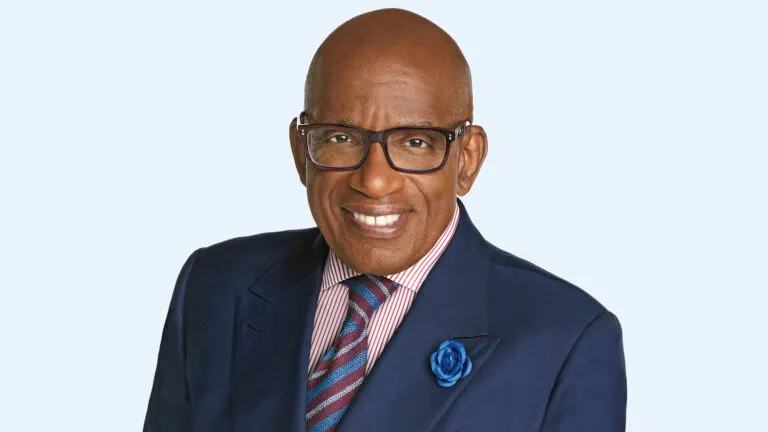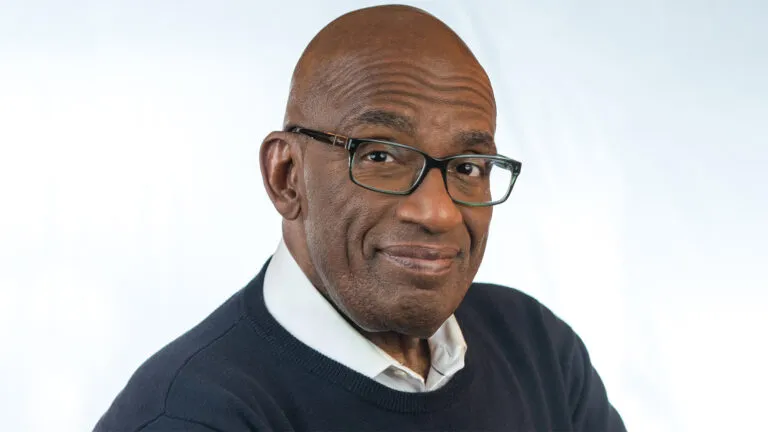If you’re like me, the name “Moses” summons up a stern, God-like figure with a long white beard. At least, that’s how I used to think of Moses. Then something happened which for an instant whipped away the white beard and left me staring into the face of a flesh-and-blood man.
It happened not once but three times. I’d like to tell you about the man I met on those three extraordinary occasions.
My first glimpse of Moses came on Mt. Sinai, where we went to film scenes for the picture The Ten Commandments. It took us two days to drive to the mountain from Cairo over country so desolate that half way there all pretense of a road gave out and the drivers had to pick their way among the rocks.
Then, suddenly it was there against the horizon: Mt. Sinai—to our Arab drivers, “Gebel Musa,” the Mountain of Moses.
What was there about that brooding shape that brought a sudden chill to the stifling day? Certainly it was the loneliest mountain I had ever seen: a vast rock against the desert sky.
But there was something else about it, something that made me half-afraid to go nearer. In Moses’ day, men believed it was certain death to set foot on Sinai—because, they said, it was the dwelling place of God.
I told myself that modern men knew better. But as we lurched toward the foot of Gebel Musa, I could not rid myself of the feeling that in some mysterious way that mountain belonged to God and not to men.
We camped that night at its base and the next morning set off on foot for the summit. After a few minutes of climbing, my breath was coming hard and my heart was thumping.
The slopes were even steeper and more savage than they had looked from below. Sudden chasms dropped away to nowhere, ragged volcanic cinders slashed my boots and the hot desert wind filled my lungs.
And all the while I had the haunting conviction that I was alone. It was nonsense, of course; there were a dozen men toiling up the mountain with me. But the mountain was all around us now, until I felt that I was alone here with the crumbling rocks.
It was around one of these that I first met Moses.
I saw him struggling up these same cliffs—sandals torn, hair blown by the desert wind, eyes wide with fear. Yes, Moses was afraid as he climbed this mountain; if it filled me with a nameless awe in this unbelieving century, what must it have done to the man who knew he was trespassing on the holy place of God Himself?
In that instant the stately lawgiver with long white beard was gone, and Moses was a man, panting for breath as I was, heart hammering with the cruel climb—and hammering with something more terrible still.
For Moses, as he climbed, was caught in the uncanny presence which still surrounds this mountain. And suddenly I knew that he had climbed in terror.
This was my first glimpse of Moses. A week later, I imagined I saw him again, at another moment in his life.
One of the hardest things about motion picture acting, I think, is that you don’t play your part straight through from beginning to end, the way it actually happened.
In this movie, the first scenes I played were the ones on Mt. Sinai. Now, a week later, I was to act a sequence that took place many years earlier in Moses’ life: the scenes that show him fleeing from Egypt across the desert.
For three days I walked, stumbled and crawled through that desert while the cameras rolled and the layers of dust on me caked to a solid crust.
Our Arab drivers were dumbfounded by this new turn of events. One of them in particular watched me anxiously as I slumped to my knees in the sand.
It was a scene where Moses roots up a tiny green plant and scrabbles in the soil beneath it in search of water. He watched us run through several takes, until he could stand it no longer.
“Why we not give this sad man some water?” he cried in great compassion, “then all go back to Cairo!”
But the sad man struggled on, all that day and the next, over the blazing red rock. And here in the desert I met Moses for the second time.
It wasn’t a sudden, breathtaking meeting, like the time I rounded a rock on Mt. Sinai. This was a gradual acquaintance, a knowledge that grew in me as I walked, hour after hour, over the most forlorn landscape I’ve ever seen.
It was simply this: Moses knew what it meant to fail. His flight through this desert came at a time in his life when he had no faith; he had not yet met God and received his divine commission. He was just a man running for his life.
He was fleeing Pharoah’s death sentence, only to find a far more hideous death awaiting him under the pitiless sun.
He kept going simply because there is one thing more horrible than walking in that desert, and that thing is stopping there, where the heat closes around one like a shroud. He kept going, but he could not have hoped to cross this wasteland alive.
Simply to look at it is to forget all hope. Despair rises from the dry wadies (watercourses which flow only during rains) like the rippling heat, and the very hills are built of dust.
Here again, Moses the patriarch was nowhere to be seen. Here was only an exhausted man, a man who, this once at least, had hit rock bottom.
My last glimpse of him came nearly two weeks later. At the edge of the desert not far from Cairo, our stage crew had reconstructed the gates of a city and here, on a Saturday morning, 7,000 Egyptian extras assembled for the Exodus scene.
I got into my make-up and wardrobe hours early and walked out onto the set. There I stopped short. I had known there would be 7,000 people there, but how many that was I didn’t know until I saw them.
For a mile in front of me stretched a solid mass of people and animals. They filled the avenue of sphinxes that led into the desert and spilled out over the sand on either side.
After a while, I began to pick out individuals. Right in front of me six dusty camels belched as their driver prodded them into position. Next to him a fly-ridden little girl guarded a few scrawny geese.
An old Bedouin beside her tugged at the carcass of a dead donkey. A shiny new foal and a week-old infant pulled for milk from their mothers. Few of these people had ever seen a movie; none had more than the vaguest idea why they were paid to gather here.
For two hours I walked, inching my way through the sweaty swarm of people and animals, haltingly trying out my two Arabic phrases: “Greetings” and “As God wills.”
And everywhere I walked, people recognized the tall staff and the Levite robe. Moses is as great a figure to Moslems as to Christians and Jews. Everywhere their warm murmur followed me: “Musa! Musa!”
I was lost now, not in space, but in centuries. Surely, on the morning of that long-ago Exodus, these were the same eyes that followed Moses. The same skinny animals, the ragged clothes, the stink of poverty.
I squeezed through the farthest rim of the crowd and out into the desert. Lifeless and endless it stretched to the horizon, while behind me the voices faded and swelled, “Musa, Musa!”
These people had trusted Moses, they had followed where he led—and where had he led them? Into this waterless desert? Into this unspeakable wilderness?
I turned and looked back at the sea of old men, half-starved women, tiny children. Moses could not have led them into this desert!
Not the Moses I had seen—not the man who had crawled on his knees through this very wasteland. Not the man who had struggled, panting and terrified, up the slopes of Mt. Sinai; that man was capable of doubt. Could he now walk into this desert with the little girl and her geese?
The moment had come for Moses to lift his staff and signal Exodus. I walked slowly to where they waited, twisted and tangled back through the cool sphinxes. What had Moses felt as these eyes turned to him in trust? The man I had glimpsed on Mt. Sinai had been afraid.
I had met Moses on Sinai, yes, but Moses had met God. And then I knew what Moses had felt, he had been confident, joyous, unhesitating.
Of course Moses could not lead these thousands across the desert. He never would have tried. But God could do it. And Moses, this all-too-human man, this man so much like the rest of us, had simply turned himself into the instrument through which the strength of God moved.
With joy I cried out the words that Moses cried:
“Bear us out of Egypt, O Lord,
As the eagle bears its young upon its wings…”
Then I lifted Moses’ staff and saw the multitude heave into a vast shudder of motion, and walk out from bondage.
For more inspiring stories, subscribe to Guideposts magazine.





